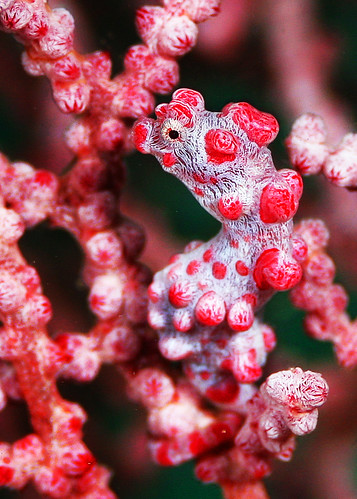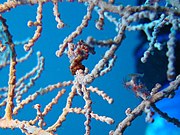
Pygmy Seahorse, originalmente cargada por alukii.
This species is known to occur only on gorgonian corals of the genus Muricella, and has evolved to resemble its host. The tubercles and truncated snout of this species match the color and shape of the polyps of the host gorgonian, while its body matches the gorgonian stem. The camouflage is so effective, the original specimens were discovered only after their host gorgonian had been collected and placed in an aquarium.
The pygmy seahorse is found in coastal areas ranging from southern Japan and Indonesia to northern Australia and New Caledonia on reefs and slopes at a depth of 10-40 m.
On the lower portion of the abdomen, males have a brood pouch in which the female lays her eggs. They are fertilized by the male, and incubated until birth.














No hay comentarios:
Publicar un comentario